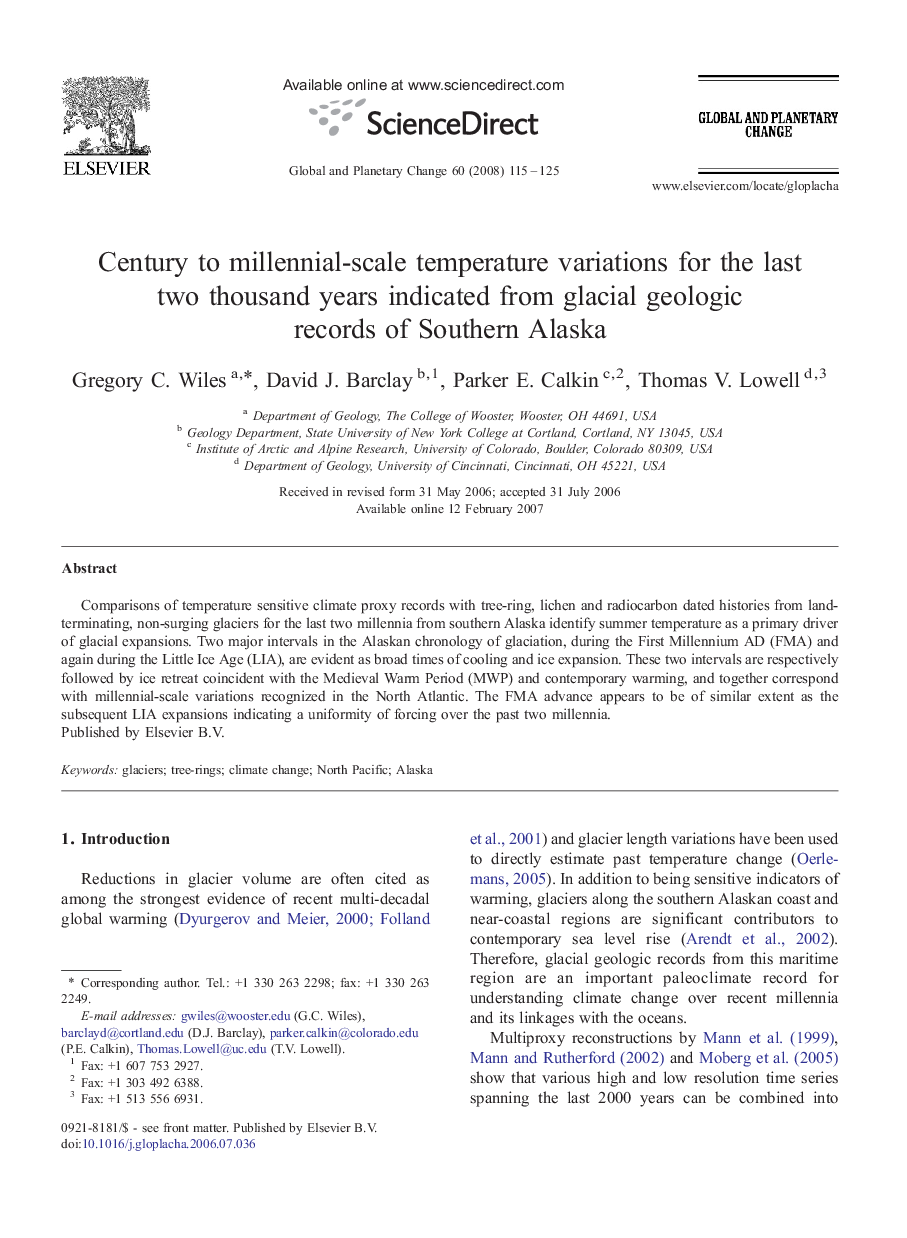| Article ID | Journal | Published Year | Pages | File Type |
|---|---|---|---|---|
| 4464308 | Global and Planetary Change | 2008 | 11 Pages |
Comparisons of temperature sensitive climate proxy records with tree-ring, lichen and radiocarbon dated histories from land-terminating, non-surging glaciers for the last two millennia from southern Alaska identify summer temperature as a primary driver of glacial expansions. Two major intervals in the Alaskan chronology of glaciation, during the First Millennium AD (FMA) and again during the Little Ice Age (LIA), are evident as broad times of cooling and ice expansion. These two intervals are respectively followed by ice retreat coincident with the Medieval Warm Period (MWP) and contemporary warming, and together correspond with millennial-scale variations recognized in the North Atlantic. The FMA advance appears to be of similar extent as the subsequent LIA expansions indicating a uniformity of forcing over the past two millennia.
